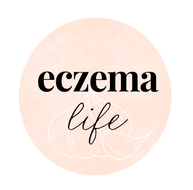Pompholyx Eczema
Have you ever had an itch so intense that scratching just made it worse? Now imagine that itch comes with painful blisters on your hands and feet—making typing, walking, and even shaking hands uncomfortable.
That’s the daily reality for those suffering from Pompholyx eczema. But there is hope.
There are effective ways to manage and prevent this condition, and we’re here to share them with you. From understanding triggers, to using the right creams, let’s dive into how you can find relief.
Blog by nutritionist Karen Fischer, author of The Eczema Diet and The Eczema Detox.
Pompholyx eczema is also called dyshidrotic eczema and the main symptom is blistering which can occur on the hands and feet. Other symptoms include
- blisters which may break and weep,
- inflamed skin,
- itchy skin,
- peeling, flaking, and
- dry, rough skin.
The sides of the fingers, palms of hands and soles of the feet are affected, although this form of eczema can present with other types of eczema elsewhere on the body.
Causes of Pompholyx Eczema
Contributing factors that can aggravate or trigger this form of eczema include
- emotional tension or stress
- Poor diet and nutritional deficiencies
- sensitivity to metal compounds (i.e. nickel, cobalt and chromate)
- exposure to heat, and
It was once thought that sweating and disordered sweat glands caused this condition but that has since been disproven ( Calle Sarmiento, 2020).
Pompholyx eczema accounts for 5-20% of all cases of hand eczema (Agner, 2015).
Treatment options for pompholyx eczema include avoiding triggers, making dietary changes and taking dyshidrotic eczema supplements to improve your skin's resilience.
What about eczema creams?
As you probably already realise, most eczema creams do not address the blisters or the underlying triggers, so they don't work for long. Topical steroid creams are commonly used for this condition (Wollina, 2010) but they thin and damage the skin barrier, increasing the risk of your eczema returning in a more aggressive manner than before (research listed here).
As a registered health practitioner, I recommend Wonder Zinc and Eczema Friend to my patients. Wonder Zinc is particularly helpful for minimising the blisters as the zinc dries out the blisters and the cream restores the skin barrier so the eczema is less likely to return.
These creams help to fight irritation and bring you the relief you deserve. Give them a try and say hello to happier, healthier skin.
Don’t let Pompholyx eczema call the shots! By understanding your triggers and using the right products, you can keep flare-ups at bay.
Click here to find out more about Wonder Zinc for pompholyx eczema
See The Itchy Dozen Worst Foods for Eczema for diet tips.
Cite me: Fischer, K., 2024, 'Pompholyx Eczema', retrieved from https://www.eczemalife.com/pages/pompholyx-eczema-dyshidrotic
About the author
Click here to read Karen's story (you will be redirected to her new website)
READ MORE
Eczema
Types of eczema
About Eczema Life
What is the difference between eczema and dermatitis?
References:
Calle Sarmiento PM, Chango Azanza JJ. Dyshidrotic Eczema: A Common Cause of Palmar Dermatitis. Cureus. 2020 Oct 7;12(10):e10839. doi: 10.7759/cureus.10839. PMID: 33173645; PMCID: PMC7647841.
Classification of hand eczema. Agner T, Aalto-Korte K, Andersen KE, et al. J Eur Acad Dermatology Venereol. 2015;29:2417–2422. doi: 10.1111/jdv.13308.
Wollina U. Pompholyx: a review of clinical features, differential diagnosis, and management. Am J Clin Dermatol. 2010;11(5):305-14. doi: 10.2165/11533250-000000000-00000. PMID: 20642293.





